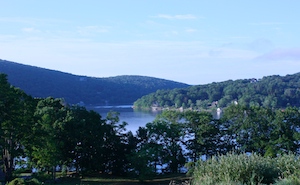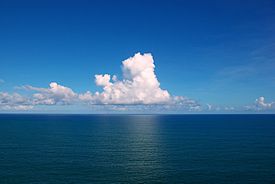Time counts and keeps countin’, and we knows now finding the trick of what’s been and lost ain’t no easy ride. But that’s our trek, we gotta’ travel it. And there ain’t nobody knows where it’s gonna’ lead. Still in all, every night we does the tell, so that we ‘member who we was and where we came from… but most of all we ‘members the man that finded us, him that came the salvage. And we lights the city, not just for him, but for all of them that are still out there. ‘Cause we knows there come a night, when they sees the distant light, and they’ll be comin’ home . . .
To you future archaeologists who now have uncovered the northeastern part of the United States that was wiped from the map and most of history by the mighty storm known as “Hurricane Sandy” (or by your era simply as “Frankenstorm” or “The Big One Back in ’12”), and have now stumbled upon this blog, I say greetings!
While others around me scrambled to stockpile survival supplies such as durable goods, bottled water, batteries and the blu-ray release of Magic Mike, I decided that given my skill set, it would be more productive to preserve a record of my beloved state of Connecticut so you can know more about it as I assume Frankenstorm undoubtedly altered the events of humankind as we know (or knew) it. Or so we’ve been told—as I type this, it’s still a good day or so before the rain has even started.
For the record, Connecticut used to look like this:
But now post-Frankenstorm probably looks like this, as you’re well aware:
Chances are that you there in the future may only have fragments and scraps of our history culled from the memories of survivors and the pieces of detritus you salvaged from the high storm tides and fierce gales that obliterated our way of life. You may have read about our fair land from one of those old flat things made of paper that contained words and pictures—we call them “books,” you probably call them “the senseless murder of trees for crass entertainment purposes”—or you may have learned about us from whatever electronic records managed to withstand the wrath of Frankenstorm.
As the colossal weather system bears down on us, I have precious little time to share everything Connecticut was, but I thought I might at least record some of the key things you should know that may not be obvious.
• We didn’t come up with the name “Connecticut”—it was here when we got here. And by “we,” I mean the European explorers who first arrived in the 1600s and then systemically took it away from the Native Americans (don’t worry, they take back their wealth via roulette wheels, poker and slot machines). “Quinnehtukqut” (various spellings are available) means “by the long tidal river” and referred to the lands on either side of the large waterway that bisected the state from north to south. In conjunction with the old Puritan spirit that long inhabited parts of the region, we never really came up with anything catchier or shorter, or even a decent nickname—sometimes we were called “the Nutmeg state,” but it wasn’t exactly a compliment.
• Connecticut was also referred to as “The Land of Steady Habits,” except that had nothing to do with nuns who wouldn’t change their clothes and everything to do with early settlers having very strict moral codes. In 2012, however, we now allow progressive social ideas such as gay marriage, women’s suffrage, the use of medical marijuana and—only after 200 years of quibbling and handwringing—the devils’s fire water (aka “alcohol”) to be sold on Sundays.
• Speaking of the Puritans, Connecticut was known for its infamous “Blue Laws,” a strict code that included such infractions such as:
– Men-stealers shall suffer death.
– Married persons must live together, or be imprisoned.
– Every male shall have his hair cut round according to a cap.
– Fornication shall be punished by compelling the marriage, or as the Court may think proper.
As it turns out, these were all complete fabrications, whipped up by the vengeful Rev. Samuel A. Peters, a British loyalist during the (first?) American Revolution. Peters, angry that he was essentially run out of his country of birth by those who wanted to tar-and-feather him for spreading his pro-British views when the young nation was in the process of declaring its independence, wrote A General History of Connecticut, a satire mocking the colony that many people subsequently have mistaken as truth. It was not, although there were plenty of bad haircuts and fornicators who were punished by marriage.
• Although you may have uncovered numerous dinosaur-themed attractions in the state, we did not actually exist at the same time as these giant thunder lizards. We did have plenty of lounge lizards (see the aforementioned Native American gaming establishments).
• Despite being located in New England, not all residents here were fans of the New England Patriots professional football team. In fact, most of the people absolutely hated them. Yeah, that’s the ticket.
• Ironically, when it came to baseball, we embraced the area team—the Boston Red Sox—and despised the New York Yankees. Weird how things worked out like that.
• Professional wrestling was not invented in Connecticut, although the biggest “sports entertainment” organization in the world was based here. And even though the owner of the company twice ran for U.S. Senate, believe me, it was not because everyone thought it was a good idea—in fact, if the state hadn’t been destroyed by Hurricane Sandy, it may have been buried under campaign literature from Linda McMahon.
• The southern stretch of the state was called “The Gold Coast” due to the high concentration of extraordinarily wealthy people who lived there. First off, there was no actual gold there, although if there was, those people living there would’ve made sure that they got it and everyone else was “disposed of.” Second, it was not representative of the entire state as there were many low-income and impoverished people throughout the state who never even tasted Grey Poupon. Finally, if anything came out of the destruction of the East Coast, at least the rich were smited along with the poor. I hope.
• Yale University in New Haven was one of the finest institutions of higher learning in the entire United States. Unfortunately, by 2012, very few people from the United States—and almost no one from Connecticut—actually attended it.
• The state was home to a number of influential writers over the years—Noah Webster, Mark Twain, Harriet Beecher Stowe, Philip Roth, Wally Lamb, Suzanne Collins, Stephene Meyer, Ray Bendici, Maurice Sendak, Arthur Miller … you get the idea. Mostly all geniuses, from I what remember.
• Finally, autumn in Connecticut was an idyllic time in the state—terrific foliage, wonderful weather and tons of fall activities. At least if we went out in October, it was at the top of our game.
Okay, the storm is bearing down on me, so I have to go. I hope this gives you a better picture of what you’ve lost . . . .
Here’s part of a song from the play Camelo …. er, Connecticut, that was written by … uh, me! (Sure!) Gives you an idea of how wonderful life was here.
A law was made a distant moon ago here:
July and August cannot be too hot.
And there’s a legal limit to the snow here
In Connecticut.
The winter is forbidden till December
And exits March the second on the dot.
By order, summer lingers through September
In Connecticut.
Connecticut! Connecticut!
I know it sounds a bit bizarre,
But in Connecticut, Connecticut
That’s how conditions are.
The rain may never fall till after sundown.
By eight, the morning fog must disappear.
In short, there’s simply not
A more congenial spot
For happily-ever-aftering than here
In Connecticut.


